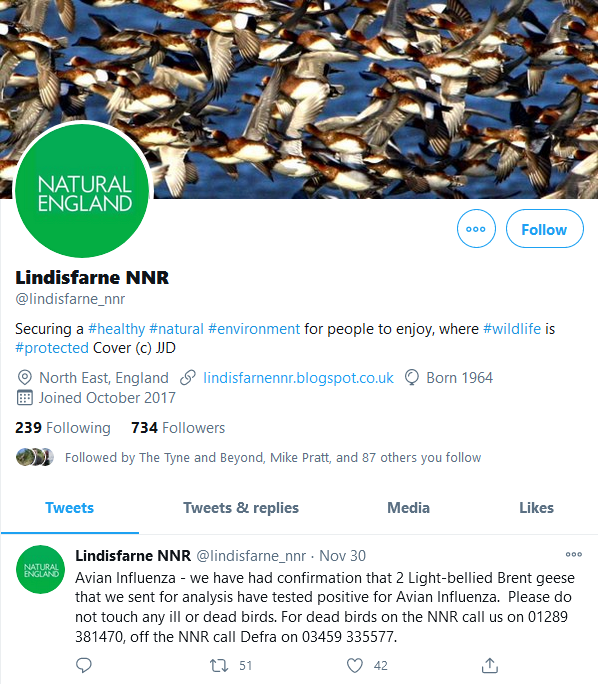
Lindisfarne is a fantastic place: it’s beautiful scenically and stuffed full of birds, particularly in winter. One of the ‘star’ birds (all birds are stars, even Linnets) is the Light-bellied (or Pale-bellied) Brent Goose which visits the area around Lindisfarne in winter after travelling from its breeding grounds in the high Arctic in Svalbard (Spitzbergen), Greenland and Franz Joseph Land.
This small goose, with its pale belly, is a recognisable subspecies of the Brent Goose, most of which in the UK are Dark-bellied Brent Geese (guess what the difference is). There are only about 6000 Light-bellied Brent Geese in the world and about half of them winter in the Lindisfarne area and the other half in Denmark. Aren’t birds amazing? In contrast the Brent Geese with the dark bellies that you might much more commonly see inEast Anglia and along the south coast of England come from a population of over 200,000 individuals of which around half winter in the UK (and they nest in Arctic Russia).
‘Our’ Light-bellied Brent geese fly over to Denmark in the late winter to join uop with the rest of the population in Jutland and from there they all head back to the Arctic.
So the Light-bellied Brent Goose is a special little goose; from our perspective it visits one small area of the northeast coast of England in numbers of a few thousand birds after travelling all the way from some of the most remote areas on Earth and before moving on to Denmark.
But two of them have tested positive for bird flu. I wonder how they got it? Has the virus been hiding away inside their light bellies all through the summer and has popped out now or have these reclusive geese picked up the virus on arrival in the UK? We can’t be sure but my money would be on the latter. And if so, from where did they get it? Was it a passing Common Gull? Or a Starling? Or some Wigeon? And where did they get it from? If we tested all the birds in the Lindisfarne area how many of them would be positive for this virus?
We don’t have a test and trace scheme for wild birds, we simply test a few dead birds, usually found on nature reserves, and usually large birds such as swans and geese, and usually dead ones. As far as I am aware, we don’t test poultry either unless they start dropping dead in large numbers. Now we are all expert epidemiologists we can see that this probably means that we don’t know a huge amount about what is going on.
But the mere fact that we were told that these wild birds were Brent Geese tells us quite a lot about their travels, and the fact that they are Light-bellied (rather than Dark-bellied, or even Black Brants) tells us a lot more. So, thanks to a bunch of ornithologists over the years, we have a pretty useful picture of where these little geese came from and where they are going: all things being equal they are heading off to Denmark in c8 weeks’ time.
The GOV.UK page on wild birds is rather out of date now as it goes up to week 47 which ended on the 22 November so we are deep into Week 49 now.
[registration_form]